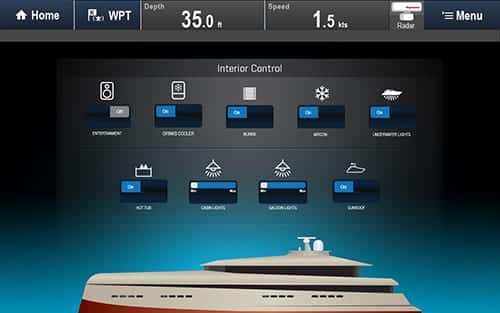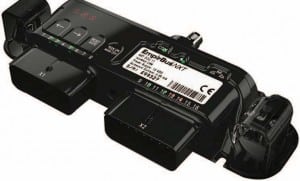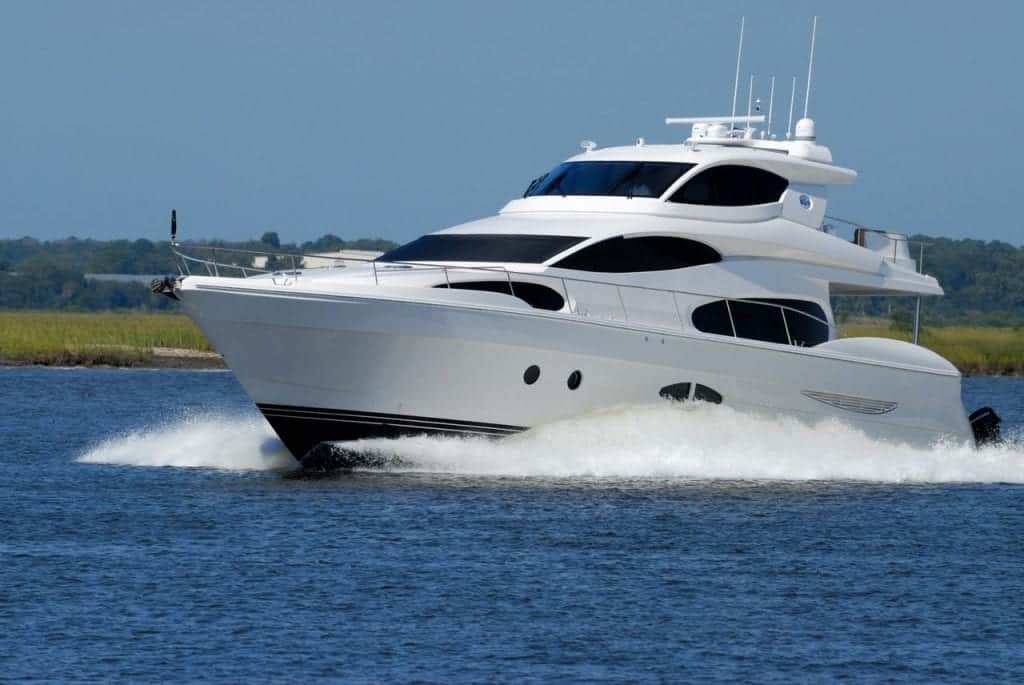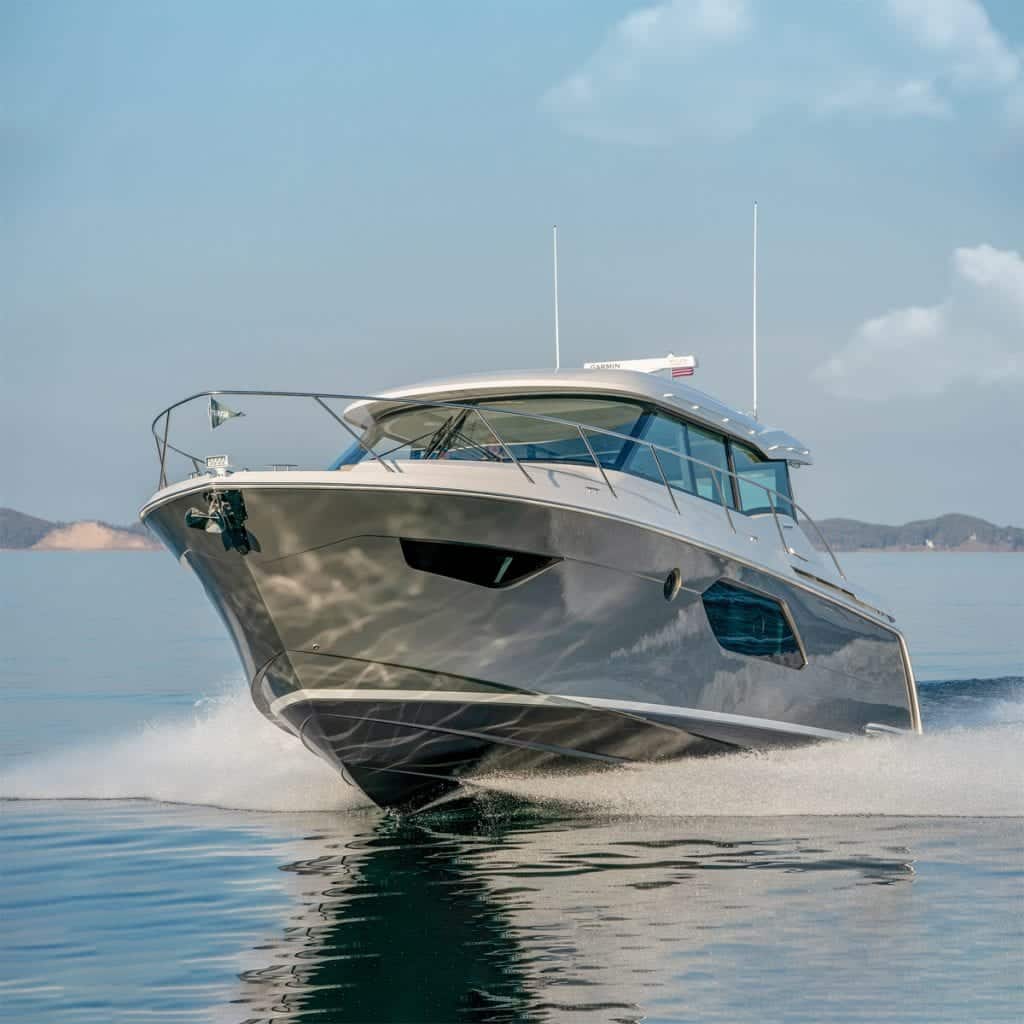Your vessel will benefit from digital switching.
Digital switching is one of the hottest trends in the boating world, and while typically associated with larger yachts, the technology is rapidly finding its way onto smaller crafts.
But what exactly is digital switching, and is it really the wave of the future? From planning a single project to rewiring an entire boat, digital switching will make the job easier. Here’s a primer to help you ride that technological wave, rather than be swamped by it.
While you may not be familiar with the marine use of digital switching, your car or truck has used some form of it for decades. Digital switching is a networked control and monitoring system that replaces conventional DC mechanical circuit breakers and switches with a digital power distribution/switching system operating on a NMEA 2000 network.
Unlike mechanical circuit breakers and switches, however, digital systems are programmable. This means users can control onboard electrical and electronic systems (lighting, security systems, bilge pumps, etc.) from any point in the NMEA network around the boat utilizing a network-connected multifunction display, smartphone or tablet.
 DIGITAL SWITCHING BENEFITS AT A GLANCE
DIGITAL SWITCHING BENEFITS AT A GLANCE
- “Plug and play” components mean the system can more easily be repaired, updated or upgraded and integrated with the large touchscreen displays at the helm of many of today’s yachts. Some systems automatically program a replacement module when plugged in, meaning end users can make repairs, eliminating the need for a service call.
- Replaces bulky, expensive switch panels and wire runs with smaller, more robust cabling and digital control modules, reducing installation cost and complexity.
- Systems are user customizable. Need your bilge pump to stay on a pre-determined time after pressing the on button or to shut off when the switch is released? No problem—USB ports allow the owner to load upgrades and configurations with a USB stick and the touch of a button—a virtual button, that is.
- Digital switching offers a number of advantages to the builder/installer: more effective modular system installation, flexibility in layout, easy system expandability, as well as cost and weight savings for reduced cabling runs and sizes. A reduction in conventional hard-wired switches means fewer holes to be drilled to install them, leading to cleaner/simpler helm consoles. Also, boat models which may have taken weeks to wire in the past can now be completed in days.
- Easier troubleshooting with system failure notification. Those fancy touchscreen buttons are not just high-tech, virtual reality versions of electromechanical on/off switches. When you turn that anchor light on, the system knows the current draw and voltage level that should be passing through it and will alert you if something is amiss via icons on the display.
- Significantly increases system reliability by eliminating corrosion-prone mechanical switches and wire connections. A properly designed and installed digital switching system will provide much greater dependability (and flexibility) than a mechanical switching system ever could.
- Allows you to call up virtual buttons on one or multiple compatible touchscreen multifunction displays.
Integrations
Digital switching is also readily integrated with chartplotters and multifunction displays (MFDs) that are so popular on today’s boats. This enables you to monitor vessel systems (such as tank levels or battery capacity) via easy-to-read graphics, which can be displayed alongside traditional MFD systems, such as radar, depth, video, and chartplotter information. This integration also provides the advantage of calling up virtual buttons on multiple touchscreen MFDs, giving you the option of eliminating one or more switch panels altogether.
Another great feature is the ability to energize groups or series of switching operations with the press of a single touchscreen button. Through the wonders of programmable digital switching, you can now step on board and turn on all of the electrical systems and electronics you’ll need for a day of fishing or a week of cruising with one virtual button. Once back at the dock, that button can again be used to shut down multiple systems (no more running around to different circuit breaker panels) while leaving required systems in use.
Timer or Delayed Off functions can also be easily set. Want the lights to remain on for 20 minutes after leaving the boat? Or how about running the engine room fan for 30 minutes after shutting the motors down? Digital switching makes both easy and user-programmable. “Fade & Dimming” modes also allow you to control light intensity and fade in or out smoothly without the need for complex dimming circuits.
Just realized you forgot to turn the stereo system off or the bilge alarm system on after that two-hour drive from the marina? Couple digital switching with Wi-Fi, cellular or satellite communications (depending on the system), and do both from the comfort of home while resting in your favorite Barcalounger.
By Frank Lanier Southern Boating Magazine
, July 2017


 DIGITAL SWITCHING BENEFITS AT A GLANCE
DIGITAL SWITCHING BENEFITS AT A GLANCE











